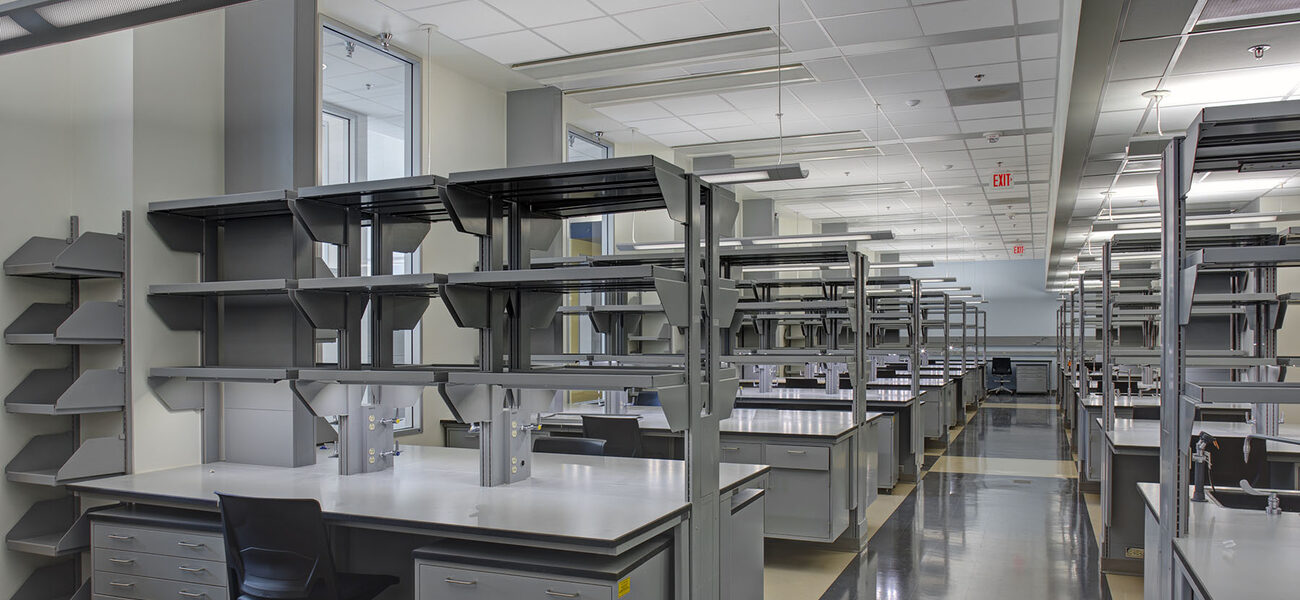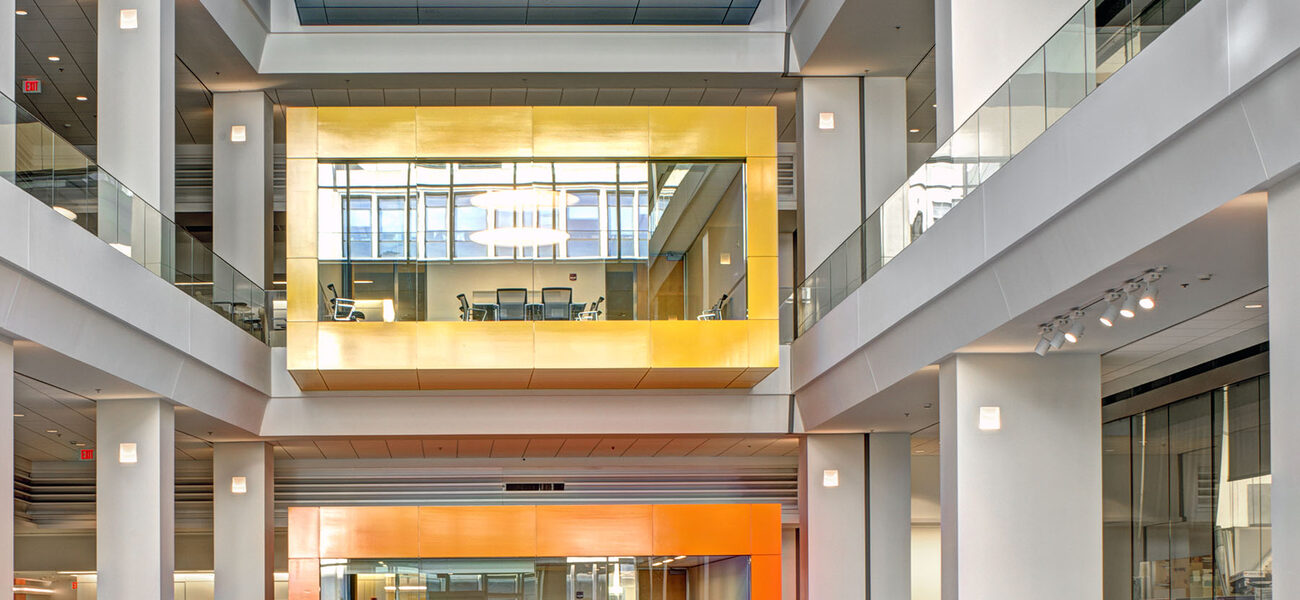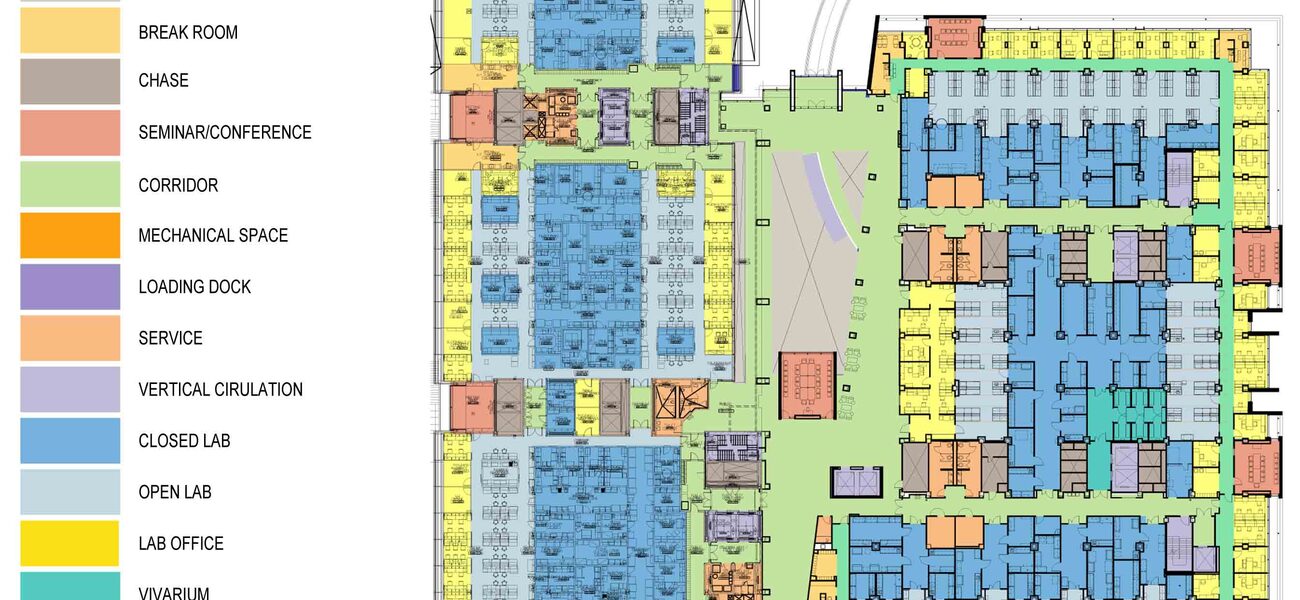The Phase II addition to the John Edward Porter Neuroscience Research Center (PNRC) houses 419 occupants, including 45 principal investigators (PIs) from 10 separate NIH Institutes, along with 374 post-doctoral researchers. The PNRC is a state-of-the-art research facility that promotes world-class biomedical neuroscience research by enhancing interdisciplinary communication and collaboration as a means of facilitating innovation and creativity. Scientific opportunities and the NIH research setting make it possible to integrate brain sciences in a manner that has not been accomplished before. The Center emphasizes, and is organized by, major crosscutting themes that are not Institute specific. Rather, they emphasize what is common about seemingly diverse disorders.
The research facility features open wet bench and behavioral testing labs and closed support labs consisting of tissue culture, electrophysiology, and microscopy and fume hood alcoves in a flexible 40/60 ratio, along with support facilities that include autoclaves, cold and dark rooms, and ice machines on each floor. Occupied lab floors have full interstitial mechanical floors above for ease of maintenance and future renovations. A large imaging suite was introduced at the basement level slab-on-grade, housing 9.4-tesla and 18.4-tesla magnets, along with an adjacent director’s reserve for future vibration-resistant imaging requirements. A 1,300-nasf vertical vivarium is located on both the first and second floors as an extension of the new 28,000-nasf basement rodent vivarium, which itself represents an expansion of the existing Phase I 26,000-nasf facility. Ten convertible holding/procedure rooms have been introduced, along with 21,645 additional cages. A volumetric atrium connects Phase I to Phase II and includes an events management seminar/conferencing space seating 350, along with an atrium and café on the ground floor and skybox hanging conference rooms servicing the upper floors.
| Organization | Project Role |
|---|---|
|
Perkins&Will
|
Architect
|
|
Whiting-Turner
|
Builder
|
|
William H. Gordon Associates, Inc.
|
Civil Engineer
|
|
Johnson Bernat & Associates
|
Electrical Infrastructure
|
|
Affiliated Engineers, Inc. (AEI)
|
MEP and Fire Protection
|
|
Cagley & Associates
|
Structural Engineer
|
|
Jordan Honeyman
|
Landscape Architect
|
|
Debra Gilmore
|
Lighting
|
|
AON
|
Life Safety and Physical Security
|
|
Wiedlinger Associates, Inc.
|
Blast Resistance
|
|
Miller Beam & Paganelli
|
Acoustics and Audio/Visual
|
|
Colin Gordon Associates
|
Vibration
|
|
Lerch Bates
|
Vertical Transportation
|
|
NMP Engineers
|
Maryland Department of the Environment Permit
|
|
Whiting-Turner Construction
|
Pre-Construction Services
|
|
Jacobs Consultancy
|
Program Management
|
|
NUAIRE Inc.
|
Biological Safety Cabinets
|
|
Roe Bio-Medical Products Inc.
|
Bedding System
|
|
Cagewash Equipment
|
|
|
Kolpak
|
Prefabricated Walk-In Room
|
|
R-V Industries, Inc.
|
Autoclaves
|
|
Thermo Fisher Scientific
|
Laboratory Casework and Fume Hoods
|
|
Siemens
|
Control System
|
|
Johnson Controls Inc.
|
York Custom Air Handling Units
|
|
Trox USA
|
Active Chilled Beams
|
|
Burt Process Equipment
|
RO Pure Water System
|
|
General Electric
|
Electrical Equipment
|
|
Rees Scientific Corporation
|
Scientific Alarm System
|


